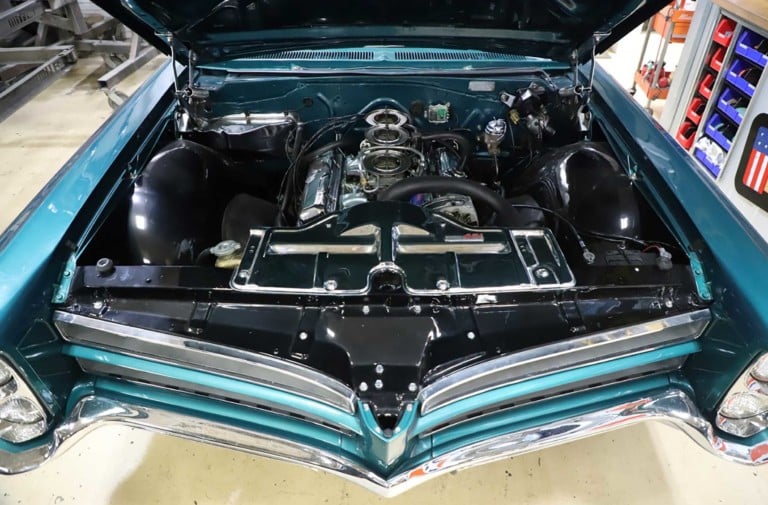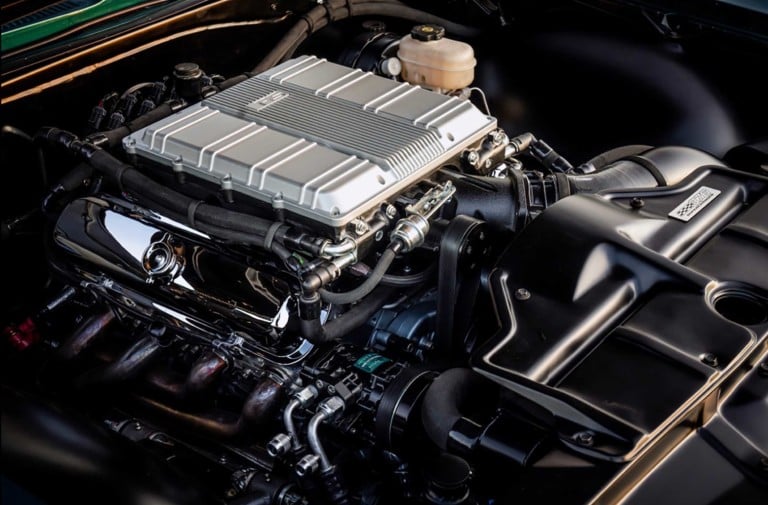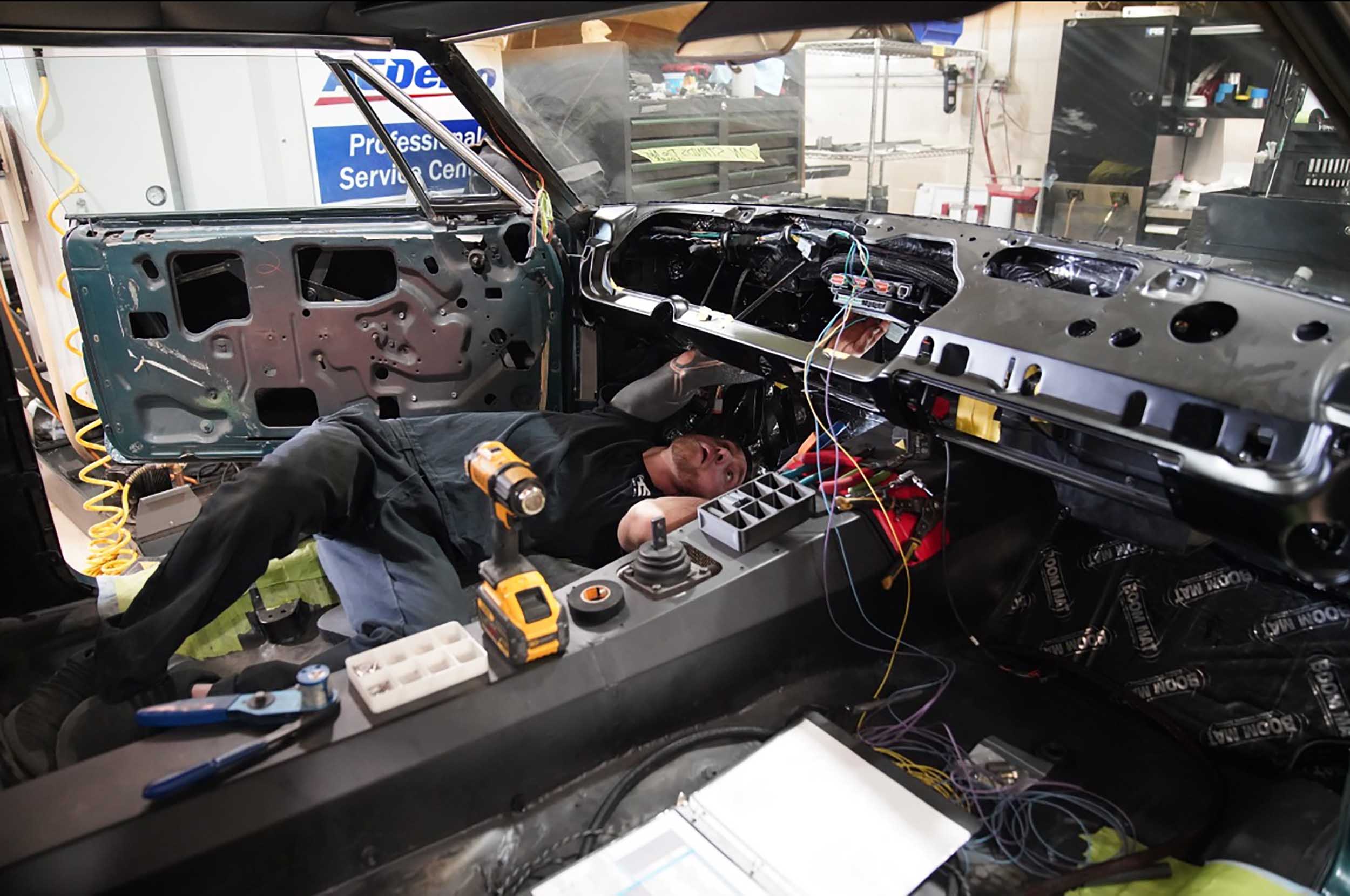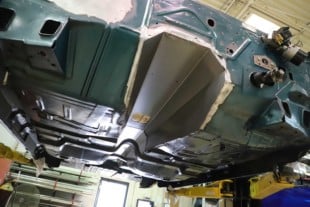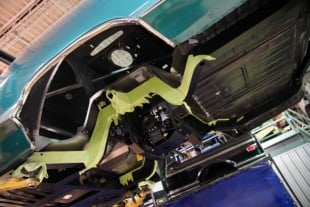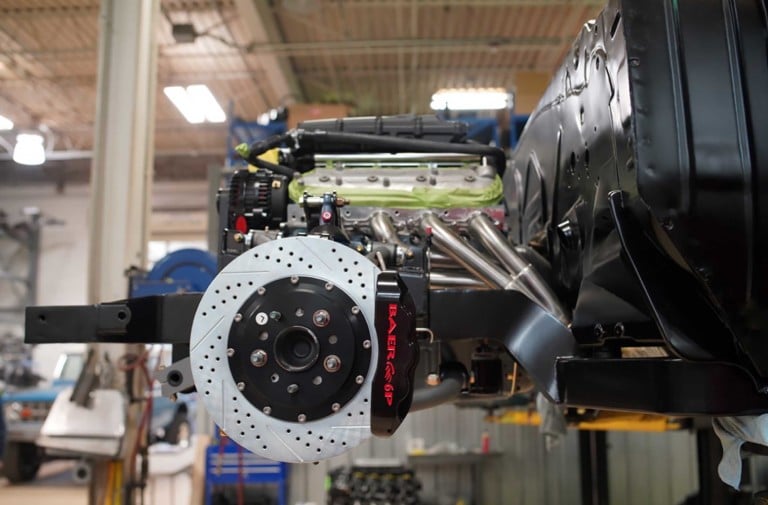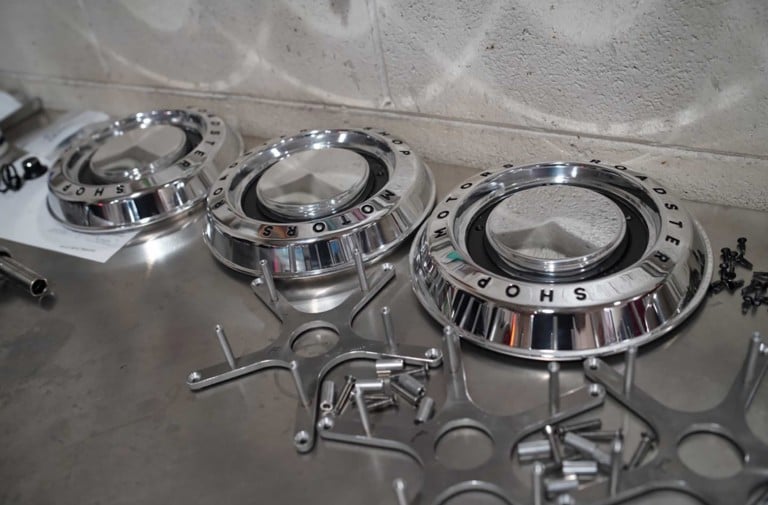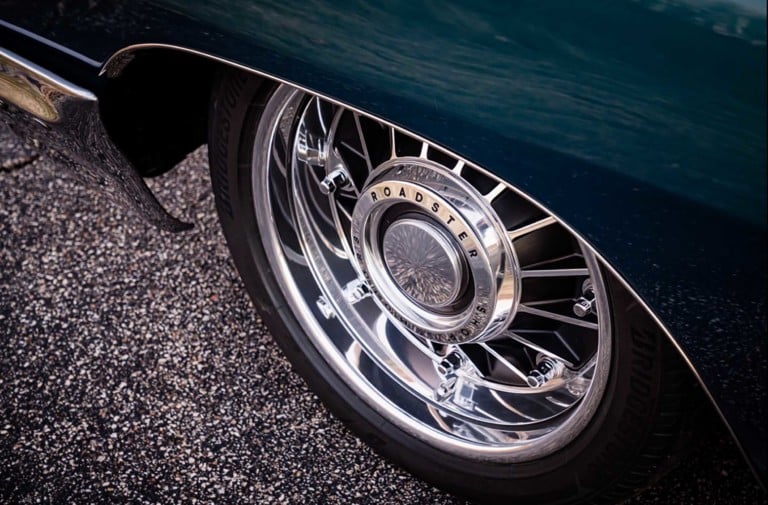When it comes time to start looking for our next project, it always pays to find the most complete, rust-free car as a starting point. What you’ll save in time and money by not having to rebuild or locate so many little items easily accounts for paying a little more upfront. This Roadster Shop Pontiac is one example where having a solid foundation is a plus, but the devil is still in the details when it comes to all those little items.
Derek Herrema, the owner of this gorgeous 1966 Pontiac Catalina 2+2, saw the work the folks at Roadster Shop did on another customer’s Poncho and wanted to upgrade his ride with one of RS’ “Survivor Builds.” A Survivor Build is based on a very nice car as the foundation, with the subject getting a complete makeover using a litany of modern components and talent found in Roadster Shop’s workforce.
Derek’s turquoise Catalina 2+2 was the sporting variant of Pontiac’s full-size car lineup in ’66. The car left the factory with a tri-powered, 421-cubic-inch engine, special bucket seats, and a floor shifter. The 2+2 nomenclature never enjoyed a similar appeal as GM’s other SS vehicles or even Pontiac’s GTO, but looking at those factory-fresh lines on Derek’s Catalina shows that it wasn’t for lack of trying!
With that triple-fed 421 Poncho motor, the 2+2 was a formidable foe at any red light. The Edelbrock-boosted Wegner LS3 makes the car more drivable and formidable!
With all the goodies the 2+2 package brought to the table, Derek knew technology had advanced over the decades and was ready for more. As these photos show, the team at Roadster Shop was the perfect choice to make that happen.
Upgrading A Classic Pontiac
The classic styling of those ‘60s Ponchos have so much to offer, and when it comes time to start mucking with things, it’s best to know when to stop. Save for those classy Catalina body lines; you could say the team at RS left no part of the car untouched. But there are so many tasteful upgrades that you would be hard-pressed to locate them all.
Some modernizations would be easily spotted, such as the Wegner Automotive LS3 engine that now wears an Edelbrock supercharger. Pushing out 750 horsepower, the fuel-injected LS3 engine is a much better choice for a modern, drivable performance variant such as the 2+2 Catalina. Just behind the engine resides a modern Tremec T56 transmission articulated via the Hurst shifter.
The interior enjoyed an entire makeover with added electronics, updated seating, and increased comfort with additional sound-deadening Boom Mat from DEI.
Even with the “performance suspension” originally found on the 2+2s, there’s little doubt that a boosted LS3 engine could easily exceed the car’s handling capabilities. That’s why the folks at Roadster Shop fitted an entire Fast Track suspension under the car. The comprehensive chassis upgrade required a few modifications to the car’s underside, but with the car at its new-and-improved ride height, there is no indication of anything beyond stock.
The most significant deviation from stock came as one piece in the Roadster Shop's own Fast Track chassis.
All that changes once you slide behind the wheel, though, as the new chassis is designed to not only fit under the Poncho but to allow it to handle like never before. The entire Fast Track chassis has been designed front to back to bring modern performance to classic autos. Up front, the Fast Track chassis features C7 Corvette spindle and hub assemblies, 1.25-inch splined front sway bar with C7 Corvette end links, and engine mounts for either small-block, big-block, or LS-based engines.
The underside of the car needed some clearancing for the new chassis and those larger wheels.
Out back, the Fast Track chassis features a 9-inch differential feeding an independent rear suspension. The chassis features Fox fixed-valve coilovers at every corner and 10-gauge, fully-boxed frame rails. The custom but retro-styled 8-lug Pontiac wheels help hide a complete BAER brake system to help stop this full-sized beauty.
A set of BAER brakes are surrounded by wheels that look very much like a set of Pontiac 8-lugs but are custom two-piece units created for this build.
Seamlessly integrating so many modern touches without making a show of it is one of the specialties of the team at Roadster Shop. Even though so many components are hand-crafted, they so closely resemble the factory design that they look like GM could have built it that way had the technology existed at the time. A perfect example of this is the center console that now features a touch-screen and control rotor to operate the audio and Vintage Air climate control systems.
Other customizations that look right at home are the trio of RS billet pedals. The pedal assembly allows for travel adjustments and side-to-side adjustments to get the perfect location under the dash. The throttle-by-wire tall-and-skinny pedal in the kit also works great with the LS3’s ECU-driven throttle body. The pedal assembly still wears that classic styling but is designed specifically for today’s technology.
When it comes to building such an awesome yet understated machine as this Catalina, restraint is definitely one of the most important tools to use during the build. The folks at Roadster Shop have used it with great results, making significant changes throughout the vehicle without making their presence a focus. Even though Derek’s ’66 Catalina 2+2 is a performance car through and through, we’d bet it gets overlooked for more hopped-up, “look at me!” types of cars on the show field from time to time. We’d bet that’s not an issue with Derek, as it appears this car is built to drive and enjoy. And, if anyone has any doubt as to the performance capability of his Poncho while sitting at any red light, we’re sure he’ll be highly capable of showing them there is more to this 2+2 than meets the eye!


